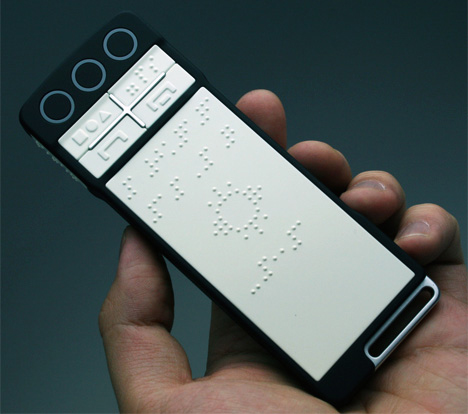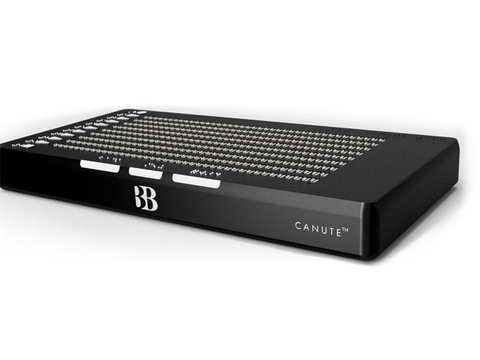OCR Devices for the Blind: Transforming Text into Speech with Ease
OCR Devices for the Blind: Transforming Text into Speech with Ease
Blog Article
Empowering Freedom With Assistive Innovation for the Blind
The combination of assistive innovation into the lives of people with aesthetic impairments represents a substantial development in advertising self-reliance and self-sufficiency. From ingenious display readers to innovative wise walking sticks, these tools not only enhance day-to-day navigating and communication but additionally encourage users to engage meaningfully in numerous facets of life. As we explore the myriad benefits and real-world applications of these modern technologies, it becomes crucial to examine the hidden variables that add to their effectiveness and the capacity for future developments in this vital area.
Summary of Assistive Innovation
%20(1).webp)
The development of assistive technology is based in principles of inclusivity and empowerment. Innovations in software program, equipment, and sensory enhancements offer customers with choices tailored to their details requirements. From display readers that convert text to speech, to tactile tools that share details with touch, these devices change the way people involve with their surroundings.
Along with sensible applications, assistive modern technology fosters higher social addition and engagement in numerous fields, including education and work (Braille displays and notetakers). As research and development proceed to develop, the possibility for assistive modern technology to further enhance the lives of aesthetically damaged individuals remains appealing, leading the way for an extra fair culture where everyone can prosper
Kinds of Assistive Gadgets
A variety of assistive tools have emerged to sustain people with aesthetic problems, each designed to fulfill particular needs and enhance everyday functioning. These gadgets range from low-tech solutions to state-of-the-art advancements, giving diverse options for individuals.
Low-tech tools include magnifiers and large-print materials that help in reading and writing. Braille tools, such as Braille styluses and slates, make it possible for tactile analysis and interaction. Positioning and mobility help, like white canes, help customers browse their atmosphere safely.
On the higher end of the spectrum, digital zoom systems and screen visitors use considerable support. Electronic magnifiers permit customers to expand message and images on displays, while screen readers convert electronic content right into synthesized speech, helping with access to details on computer systems and mobile phones.
Smartphone applications additionally play an essential duty, supplying features like text acknowledgment and navigation support. Wearable innovation, such as smart glasses outfitted with enhanced fact, is becoming an encouraging device to boost situational recognition.
Advantages of Assistive Innovation
The assimilation of assistive technology dramatically enhances the lifestyle for individuals with aesthetic impairments. These modern technologies empower customers by advertising self-reliance, enabling them to navigate their atmospheres more efficiently and carry out day-to-day tasks with higher simplicity. As read what he said an example, display visitors and magnifying software program permit people to access electronic information, cultivating specialist and academic possibilities that may have formerly run out reach.
Furthermore, assistive gadgets such as wise walking canes and GPS applications provide real-time navigating help, enhancing flexibility and security. This raised autonomy not just enhances self-confidence however additionally urges social engagement, enabling users to get involved more fully in their areas.
Assistive innovation additionally promotes communication, helping customers get in touch with others through voice acknowledgment and text-to-speech applications. This ability is crucial for keeping partnerships and accessing essential details.
In addition, the customization choices readily available with lots of assistive innovations guarantee that customers can customize gadgets to their certain demands, additionally enhancing use and performance. In general, the advantages of assistive innovation for individuals with visual impairments are profound, advertising a more inclusive society where everybody can seek their objectives and goals.
Study and Success Stories
Highlighting the transformative effect of assistive technology, countless case researches show exactly how people with aesthetic problems have actually effectively integrated these tools right into their daily lives. anchor One engaging example involves a college student who made use of display reading software program to navigate on-line sources and scholastic materials successfully. This modern technology not only promoted her education however also boosted her self-confidence in getting involved in conversations and group tasks.
An additional situation study includes an expert who utilizes a smart device application developed for navigating and item recognition. By utilizing this app, he has regained autonomy in both his individual and workplace, permitting him to commute individually and engage with coworkers better.
Furthermore, a retiree shared her experience with braille e-readers, which allowed her to access a vast variety of literature and stay attached with her area through publication clubs.
These success stories highlight the essential function of assistive innovation in cultivating self-reliance, boosting top quality of life, and advertising social integration for individuals with visual impairments (Assistive technology for the blind). By accepting these cutting-edge tools, individuals can get over difficulties and seize opportunities that add to their personal and specialist gratification

Future Fads in Assistive Technology
Innovation in assistive technology is poised to redefine the landscape of support for people with visual impairments. Arising fads stress the combination of synthetic intelligence (AI) and artificial intelligence, which boost the functionality of gadgets that assist with navigating and details ease of access. AI-driven applications are now capable of translating visual information in real-time, allowing users to engage with their environment more individually.
In addition, the growth of wearable innovation is advancing quickly. Smart glasses outfitted with augmented reality (AR) can offer audio summaries of surroundings, changing how users interact with public rooms. These gadgets not only advertise freedom however also foster social addition.
In Addition, the Net of Points (IoT) is making homes smarter, allowing for smooth connection in between everyday devices and assistive devices. This connectivity encourages customers by enabling automated reactions and voice-activated controls customized to individual requirements.
Final Thought
In final thought, assistive technology plays an essential role in empowering individuals with aesthetic impairments by boosting their self-reliance and interaction with their surroundings. The diverse series of tools and applications available not just facilitates navigating and interaction but additionally advertises social combination and opportunities for professional and individual growth. As innovations continue in this area, the potential for improving the quality of life for those with visual disabilities will increase, promoting greater freedom and empowerment.

Report this page